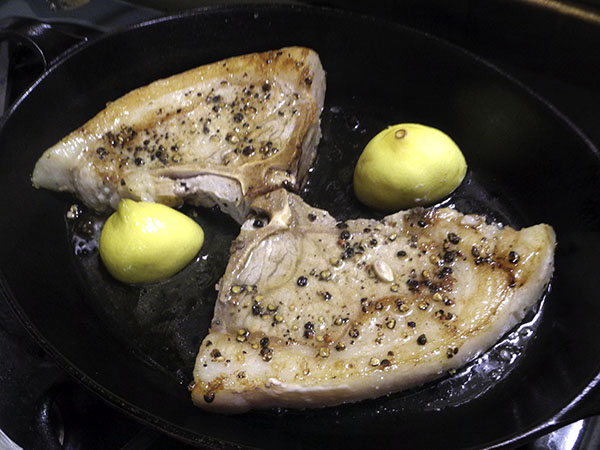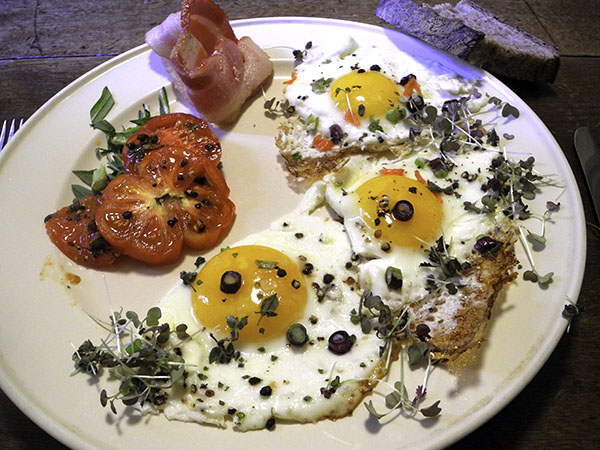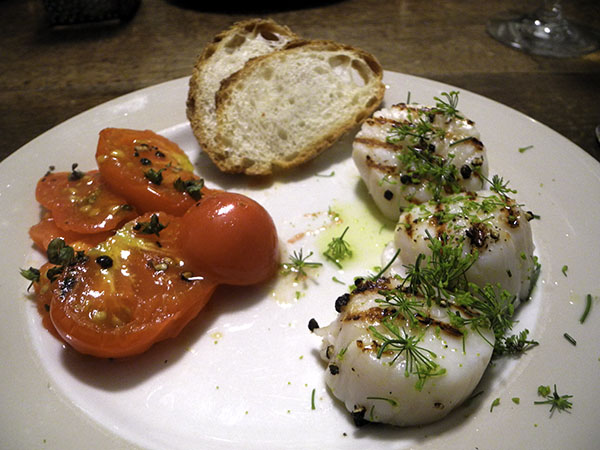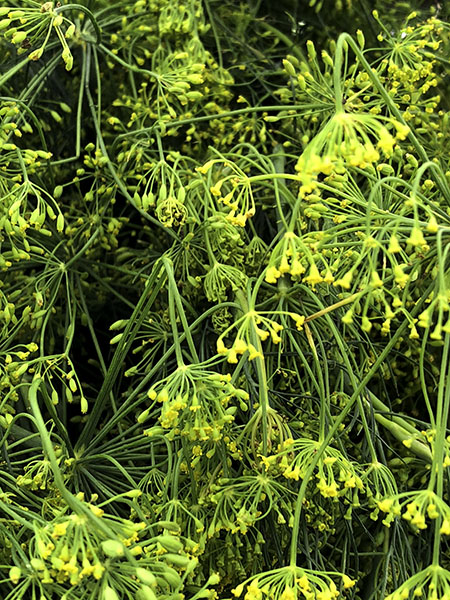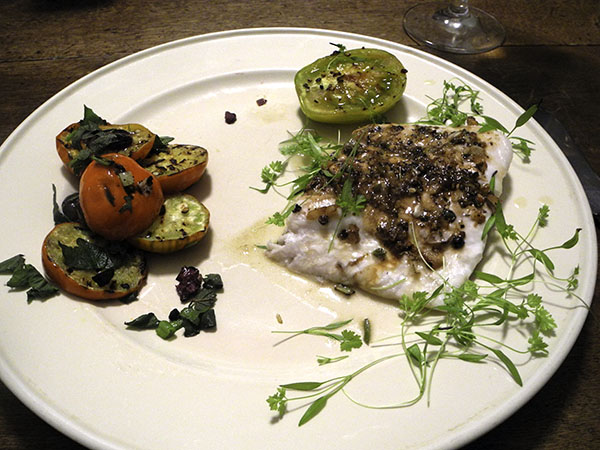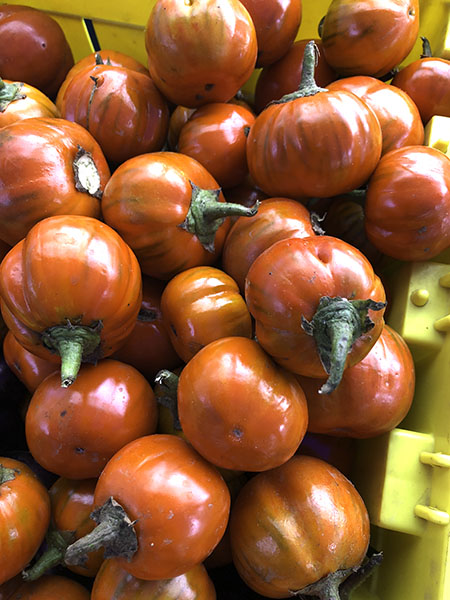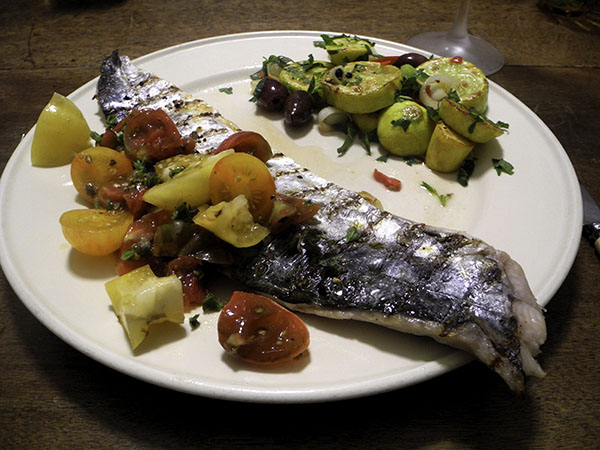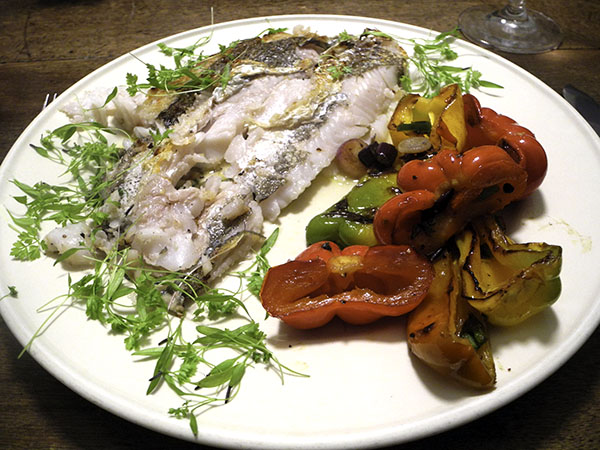
The kitchen was in chaos only moments before I snapped this picture.
I had to do some unexpected trimming of the 2 fish filets (brought home as butterflied wholes) and then change my plans on how I was going to cook it, both at the last moment, and it was already late in the evening.
I did some quick thinking, which unfortunately did not include a plan for keeping the kitchen and dining area from getting pretty smoky, decided on a relatively carefree vegetable and treatment of that vegetable, then whipped out my large steel oval fish pan.
The peppers were scrumptious, even if I didn’t have time to prepare the herb I had wanted to use with them, and instead tossed in a bit of one that remained from breakfast the day before.
The whiting was delicious, even if most of the crispy skin I was aiming for stayed in the pan. I think whiting may not be the ideal candidate for this operation, or else I hadn’t succeeded in drying the skin enough. The vinaigrette on which it rested was a brilliant way to appreciate the flavor of the fish (and the texture of the skin as well, if all had gone better last night).
- two butterflied whiting filets (20 ounces total, before trimming) from P.E. & D.D. Seafood, washed, drained, trimmed of the remains of their fins, each then separated into 2 filets, since their wholeness had now been compromised by that operation, prepared mostly along the lines of this recipe, seared inside a very hot well-seasoned steel pan, resting on a lemon-basil vinaigrette prepared more or less like this one, and garnished, somewhat exuberantly, with micro chervil from Two Guys from Woodbridge
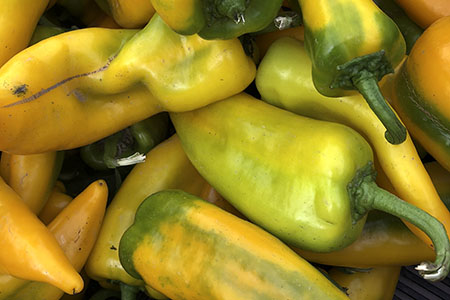
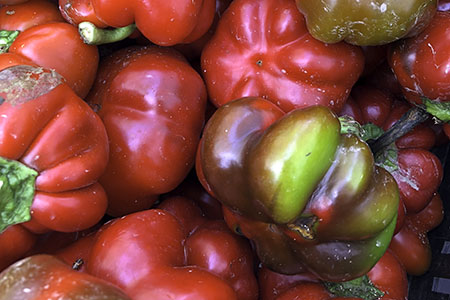
- a number of sweet ‘Bulls Horn’ yellow-green peppers and very sweet ‘Love Apple’ red peppers from Alewife Farm, each cut once lengthwise, the seeds and membranes removed, sautéed over a high flame until slightly caramelized, and one sliced red scallion from Berried Treasures Farm, a finely chopped small Aji Dulce pepper (not hot) from Eckerton Hill Farm, a small chopped section from a serrano pepper (hot) from Central Valley Farm, and a pinch of crushed dried golden/orange habanada pepper (pungent, but not hot at all) added near the end, the mix tossed with sea salt, freshly-ground black pepper and sprinkled with some budding marjoram from Stokes Farm, arranged on the plates and served with a drizzle of olive oil
- the wine was a California (grapes from the Sacramento River Delta with a small amount of Viognier from Lodi, I think) white, Miriam Alexandra Chenin Blanc California 2017, from Naked Wines
- the music was Rameau’s 1749 pastorale héroïque, ‘Naïs’, Gyorgy Vashegyi conducting the Purcell Choir and the Orfeo Orchestra

